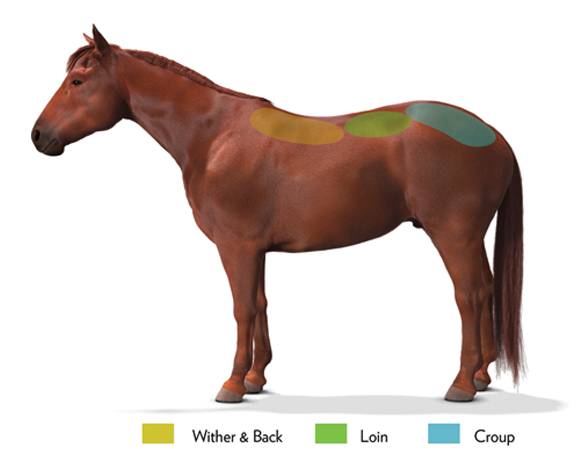Body Condition Scoring vs. Topline Evaluation System

Body Condition Scoring (BCS) and Topline Evaluation System (TES) are two methods of evaluating the overall health and nutritional status of a horse.
Body condition scoring is a system where a horse is ranked from 1 €“ 9 on its level of fatness. This score indicates if we need more or less CALORIES in the horse’s diet. Owners may also use a simplified system that looks primarily at the fat cover over the ribs to place the horse in one of three simplified score categories.
Topline evaluation is done by measuring the musculature along the spine, and giving a grade of A, B, C, or D. This score indicates AMINO ACID status and muscle quality.
Topline Evaluation System

Body Condition Score

These two measurements must be evaluated independently of one another. To learn how to measure each, refer to the tools below.
Assess Your Horse’s Topline:
To evaluate a horse’s topline, refer to the visual of the three areas to evaluate in the chart below. Then assign a grade for each area. Add up the number of areas that are adequate-to-good to determine your horse’s TES grade.
All 3 areas adequate to good = TES score of A
2 of 3 areas = B
1 of 3 areas = C
0 of 3 areas = D
Follow these steps to conduct a hands-on evaluation.
Step 1. Place the palm of your hand on the side of the horse’s withers. Does it fall inward? If so, some muscle is gone. If it remains flat, depending on the breed/horse, the amount of muscle may be adequate or can still use improvement. If your hand flexes outward there is adequate muscling in that area, unless the horse is obese. When palpating, note the presence of muscle or fat (muscle will feel firm, while fat is spongy).
Step 2. Place your fingertips on the horse’s backbone with your palm facing downward, toward the ribs. Use the same assessment above to evaluate the muscles.
Step 3. Follow the same process for the horse’s loin and croup.

Assess Your Horse’s Body Condition:
To evaluate a horse’s body condition score, utilize this simplified method that looks at the fat cover over the ribs, which is a primary indicator area of overall condition. Hands on evaluation is key, particularly for horses with long hair coats.
If your horse has easily visible ribs that you can feel, then the BCS is a 4 or lower.
If you can feel your horse’s ribs but cannot see them, then the BCS is a 5 to 6.
If you can’t see OR feel your horse’s ribs, then the BCS is a 7 or greater.
The ideal BCS for most horses is 5-6, but individual horses will vary based on metabolic needs, breed, level of fitness and conformation.

Ready to ensure your horse is getting the optimum nutrition at feeding time, every time? Find the perfect feed formulated specifically for horse’s needs with our Feed Selector Tool.
